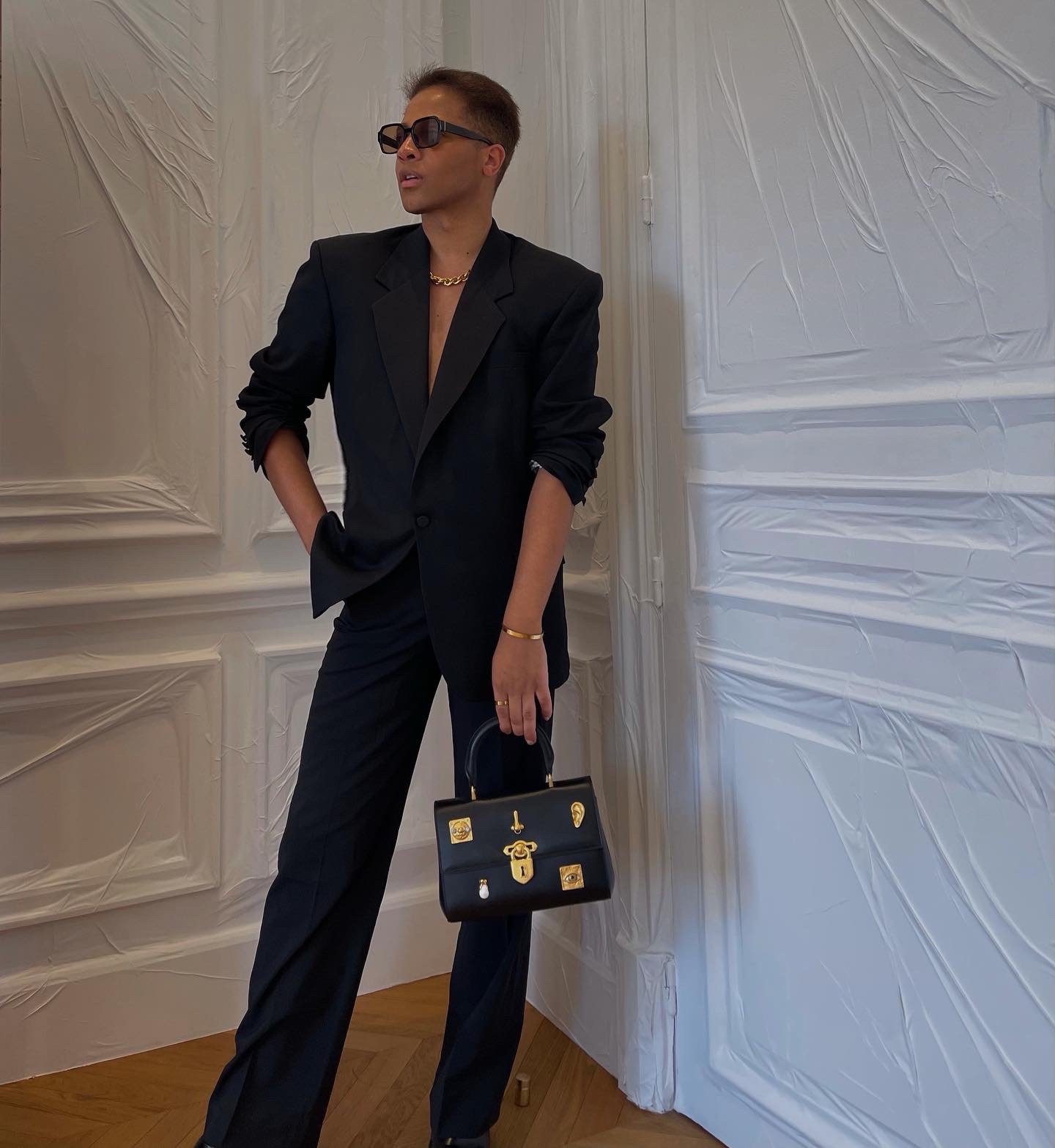
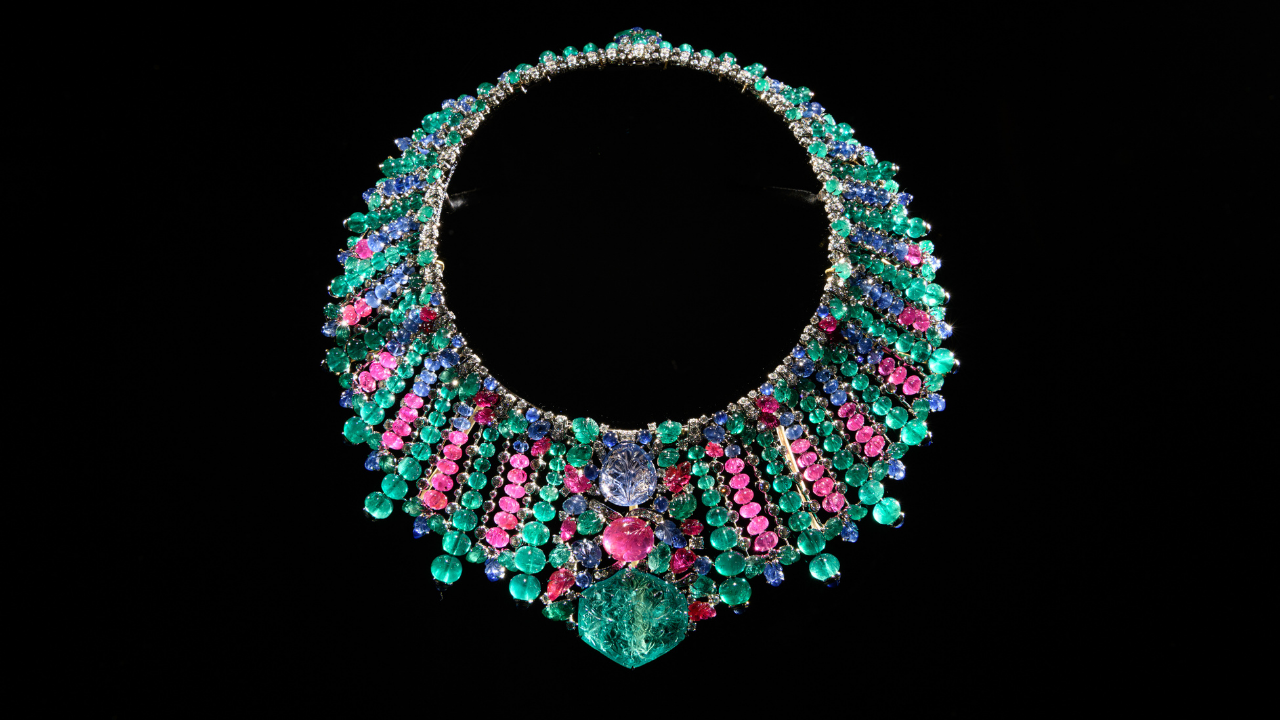
The exhibition “Cartier and Islamic Art: In Search of Modernity” arrived in Texas on May 14 at the Dallas Museum of Art, after its wildly successful Paris stop at Musée Arts Decoratifs. Coming together during a period where everything was moved virtually or hyper-focused on digital, the Dallas Museum of Art felt it was essential to bring an immersive experience around the luxury house‘s tangible objects — over 400, to be precise. As co-curator Sarah Schleuning put it during a press preview panel, it “marks a return to tactility.”
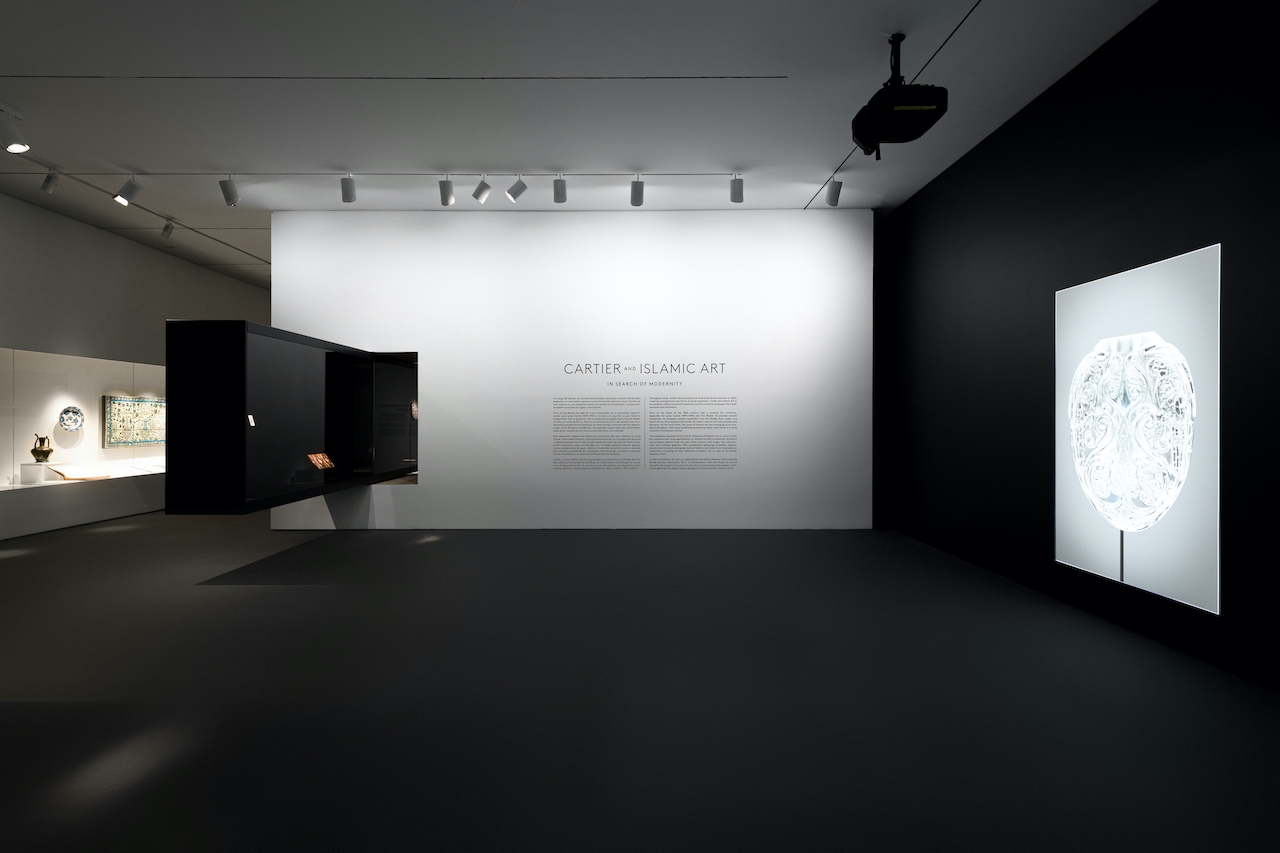
The objects on display (through September 18) come from various international institutions, including the Musée des Arts Décoratifs, the Louvre, and the Keir Collection of Islamic art. The exhibition is filled with iconic Cartier tiaras, matchboxes, and an abundance of dazzling jewels dating back to Louis J. Cartier, the house’s founder, and the work of the designers of the maison from the early 20th century to the present day. (Some are being displayed for the first time to the public.) Another section of the exhibition features precious Islamic art collections and original books from Louis’ library detailing notes and sketches from India, Iran, and Arab lands Cartier drew upon for inspiration.
The heritage label was one of the first to create an archive division in 1973, which is still used as inspiration for the house’s design team today. In 2003, Cartier created a heritage department to maintain a strong brand image for curators as they put together exhibitions for the jeweler.
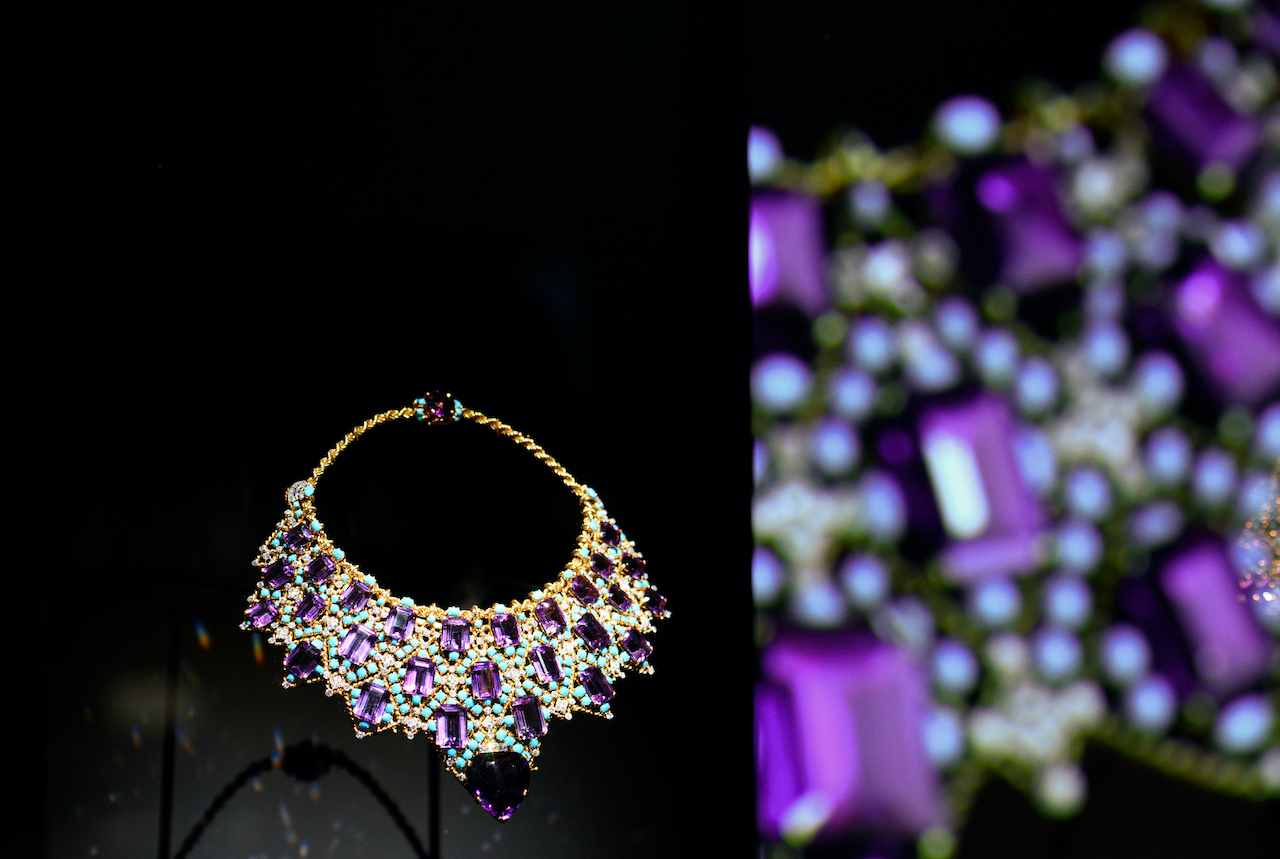
The most engaging parts of the exhibitions were floor-to-ceiling LED screens which created a contemporary display that offers viewers a close-up look and analysis of the objects, while the archive pieces remained safely under glass. Dr. Agustín Arteaga, the DMA’s Eugene McDermott Director, noted during the panel, “These digital displays are meant to serve as a reference to bring you back to the physical object with a greater understanding.”
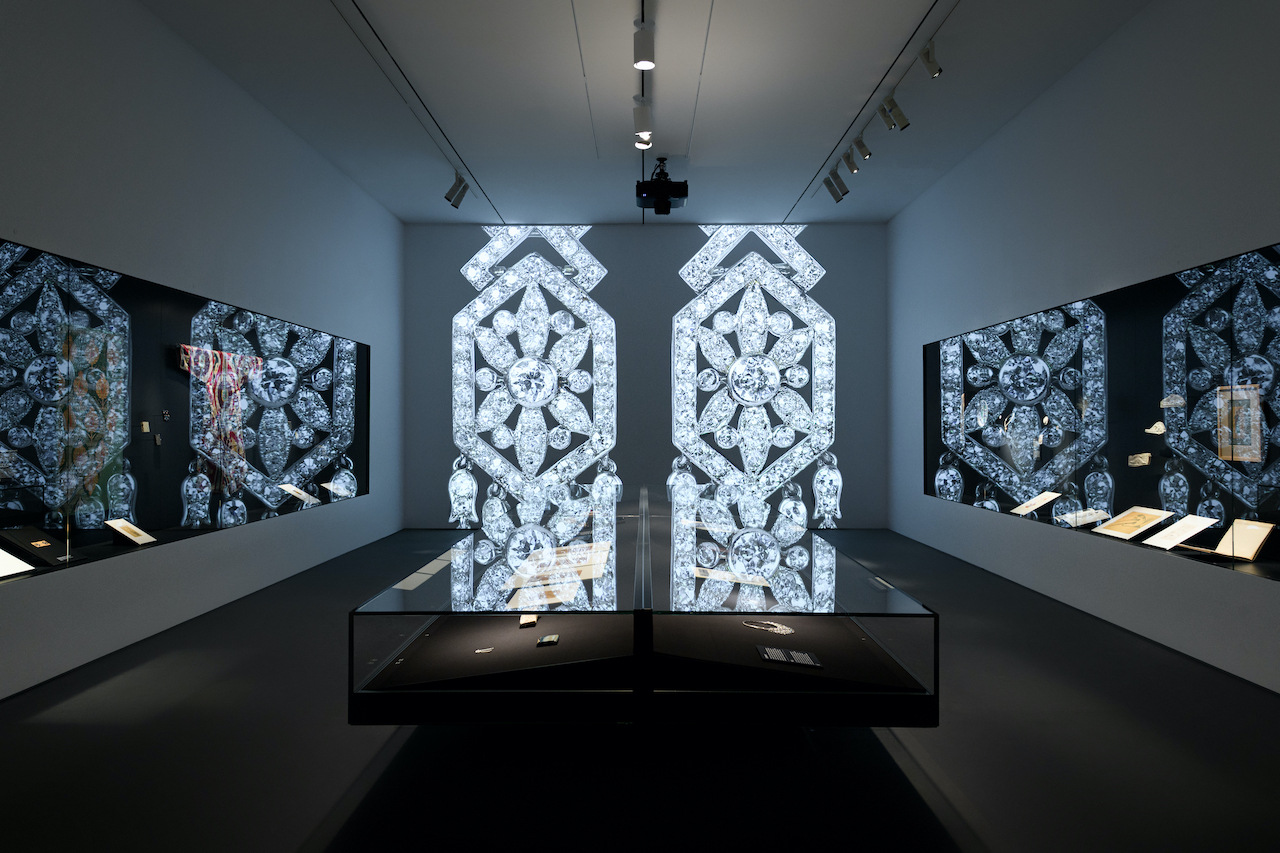
Following the first look at “Cartier and Islamic Art: In Search of Modernity” GRAZIA USA talked with Pierre Rainero, Cartier’s Director of Image, Style and Heritage (a.k.a. the brand’s “heritage gatekeeper”) on the brand’s ties to Islamic art, the process of creating the exhibition, and why Dallas was a fitting location.
GRAZIA USA: How is Cartier’s influence tied to Islamic art?
Pierre Rainero: Before talking specifically of Islamic art as an influence for our creations or our style, we should go back to Louis Cartier’s period when creators of that generation — men and women in their 20s in 1900 — were looking for a new creative expression of the forthcoming century. The idea of “modernity” was on the minds of all of those creators, and there was an emulation and stimulation among those people, Louis Cartier being one of them. That’s why they were looking at other types of forms, wherever they came from. In many ways, at Cartier, the curiosity was towards other cultures, other civilizations, and time periods.
The world of Islamic art was one of the most important for Louis Cartier and his designers because it was also the same period when Islamic art was seriously studied by art critics and art historians. This is also the period when the first important exhibitions of Islamic art took place in museums — notably the 1903 exhibition at the Musée des Arts Decoratifs — from which we still have the original catalogue from Louis Cartier’s library.
So, whether through the catalogue or whether through an actual visit, Louis Cartier and his designers saw those pieces coming from the Louvre, coming from other museums, from the collection of the Musée des Arts Decoratifs, and got inspired. Among the inspirations that came from other cultures, Islamic art was probably the most influential to Cartier’s style. This is thanks to a specific aspect, the very strong geometry across different expressions of Islamic art, that was adopted very quickly at a time when it was a kind of revolution in the creation of forms. Remember that this is at the same time of the birth of abstraction in art and the development of Cubism, so, Cartier is operating under the same preoccupation as movements in fine art by exploring new worlds of form. It’s part of a context of a period, but it’s also part of that vision of Louis Cartier to create a specific style for the house that would be definitely modern but also able to evolve on that very important basis.
G: When did the idea for Cartier and Islamic Art: In Search of Modernity come about, and how did it develop?
PR: The idea came five years ago. Personally, I realized in working on a day-to-day basis in the studio with our designers that the shapes we consider iconic elements of our aesthetic vocabulary share a common point: their origins in Islamic art, which include decorative arts, miniatures from Persia or India, and many different sources.
That’s how we started to think about the project of an exhibition and started to discuss with different museums. The Dallas Museum of Art was the first to say, ‘Oh this is an interesting project, and we want to work with this idea with our curators.’ And then the Musée des Arts Decoratifs in Paris became a partner because of the specific resonance of this concept and the seminal exhibition that took place in 1903 on the same premises.
The two museums decided to work as co-curators of this project, and the Louvre was involved thanks to its collection of Islamic art that is basically a loan from the Musée des Arts Decoratifs. The curator from the Louvre also worked on this project. And that’s how we moved towards the first presentation that took place in Paris in October of last year.
G: Tell me why Dallas was chosen to be the exhibition host city. What is unique to this particular edition of Cartier’s traveling exhibition?
PR: The Dallas Museum’s director was very interested because of the richness of the subject but also because of the resonance with the DMA’s permanent holdings and the loan of the Keir Collection. So, it was a way of also creating an echo with the specificity of this collection at the DMA.
I think that Dallas edition of this exhibition is unique in many ways. What is most striking first, when compared to the exhibition is Paris, is the scenography. Even though the same scenographer, Elizabeth Diller, designed both exhibitions, she had to create an entirely new exhibition in Dallas because the space is totally different. The space in Paris “imposed” itself on the journey of the visitor with the presence of this big nave and the division of the exhibition into many different spaces. The freedom of imagination in Dallas was total because the space is a cube. The scenographer and the curators in Dallas thereby reimagined a new journey for the visitor, including the use of new visual animations that were developed in addition to the ones used in Paris.
And then, also, there are little differences. While the catalogue is the same, there are little differences in the selection of the pieces. We have more pieces of Islamic art from the Dallas Museum of Art itself, and there were different objects selected from the Cartier archives. For instance, the presence of plaster molds from the archives were included in the Dallas iteration of the exhibition but not in Paris. There’s also a selection of different drawings and more contemporary jewelry pieces in the last section of the exhibition in Dallas than there were in Paris.
G: Is the show structured chronologically with the past Cartier exhibitions, or is there a different logic?
PR: In fact, there are two logics to this exhibition. The central part is dedicated to the lexicon of forms that Cartier built from the inspiration that came from Islamic art in general. But before discovering the evolution of this lexicon, there is a chronological part explaining the context of the interest of Cartier in Islamic art within the context of the period (the end of the 19th and beginning of the 20th century).
The exhibition notes the different discoveries made by Louis Cartier through various exhibitions and through being a collector himself (at least since 1910 after the exhibition that took place in Munich dedicated to Islamic art). Additionally, we include the crucial trips of Jacques Cartier (1911 – 1912) to India, with stops in Bahrain and Dubai, and also the construction of Louis Cartier’s library, which was at the permanent disposal of Cartier’s designers.
And then the end of the exhibition effectively shows the current life of this aesthetic vocabulary in our contemporary creations.








